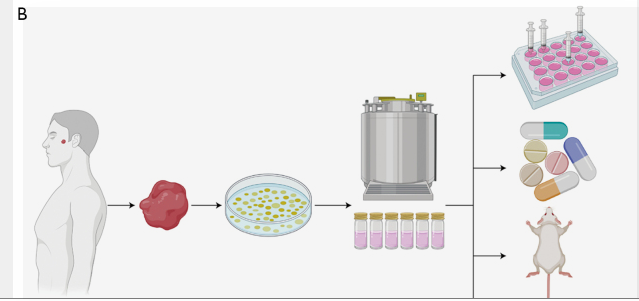Nasopharyngeal carcinoma (NPC) originates from nasopharynx epithelial cells and is common in southern China and Southeast Asia. NPC is causally linked to Epstein-Barr virus (EBV) infections. The 5-year overall survival rate for NPC is above 80%. However, recurrence occurs in 10% to 15% of patients with NPC, and the 5-year overall survival rate for patients with recurrent NPC is only 13.2% to 38%.

Potential workflow and application for a living biobank of NPCOs
The high rate of recurrence is responsible for the majority of failed NPC treatments. Currently, NPC cell lines are the most commonly used model of NPC study. However, many NPC cell lines were reported to be contaminated by HeLa cells. Moreover, EBV viral genome was observed to be lost during long-term culture in most NPC cells. Most importantly, cell lines do not reflect the molecular heterogeneity of clinical NPC tissues. As a revelational disease model, 3-dimensional (3D) organoids are based on high hopes in oncology studies. Organoids maintain phenotypic and molecular heterogeneity of their parental tissue, be for with minor genetic aberration or transformation extended periods cultured in vitro. The lack of a living model is a factor limiting the study of relapsed and refractory NPC. Therefore, the establishment of a recurrent NPC biobank using the patient-derived organoid model is of significance to clinical and experimental studies.
In this study, researchers optimized the technological process of patient-derived NPC organoids (NPCOs) modeling and raised the success rate to more than 80%. For the first time, a living biobank/database is established, which will provide powerful tools for high throughput research and drug development of recurrent nasopharyngeal carcinoma.
Click to read more.
